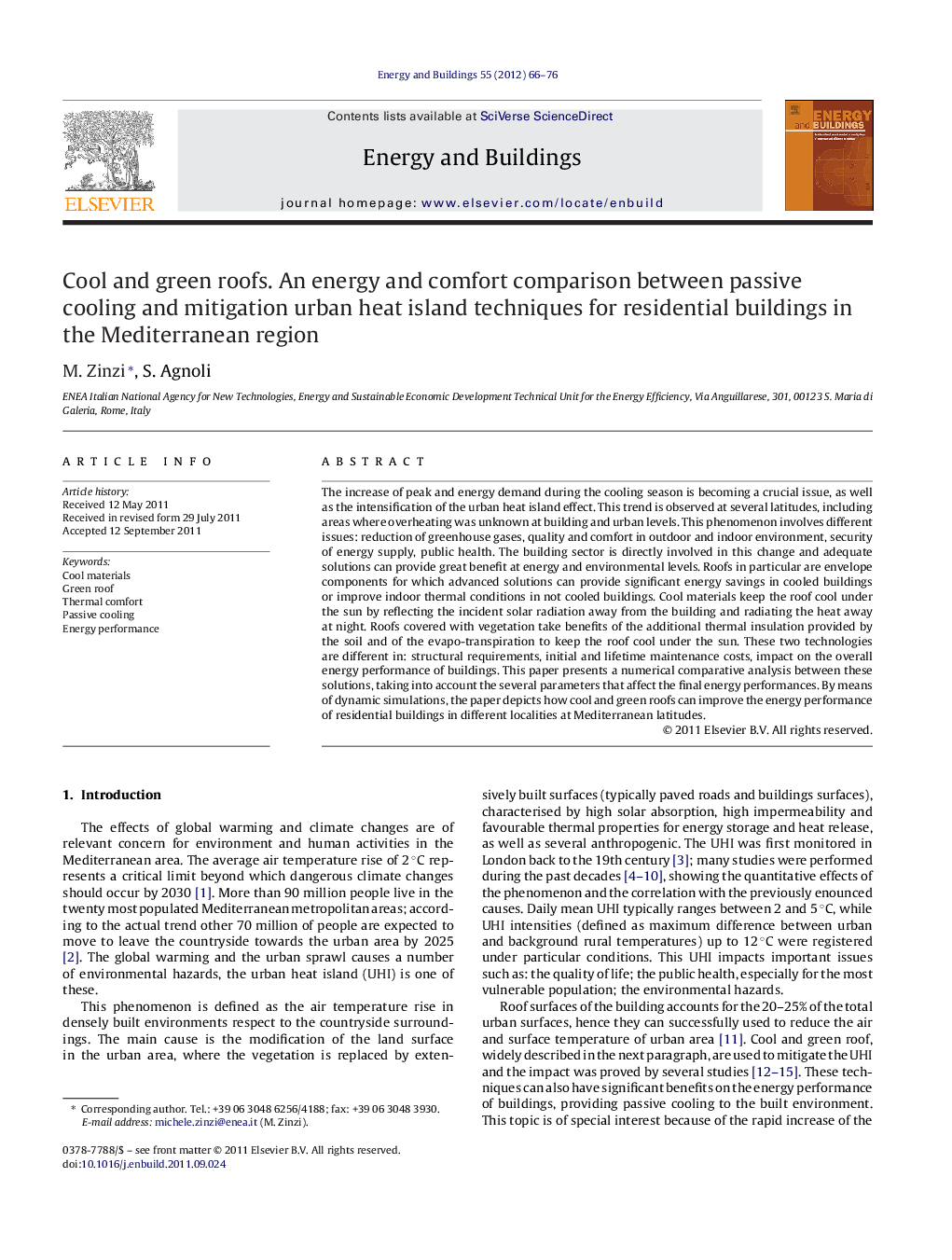| Article ID | Journal | Published Year | Pages | File Type |
|---|---|---|---|---|
| 263814 | Energy and Buildings | 2012 | 11 Pages |
The increase of peak and energy demand during the cooling season is becoming a crucial issue, as well as the intensification of the urban heat island effect. This trend is observed at several latitudes, including areas where overheating was unknown at building and urban levels. This phenomenon involves different issues: reduction of greenhouse gases, quality and comfort in outdoor and indoor environment, security of energy supply, public health. The building sector is directly involved in this change and adequate solutions can provide great benefit at energy and environmental levels. Roofs in particular are envelope components for which advanced solutions can provide significant energy savings in cooled buildings or improve indoor thermal conditions in not cooled buildings. Cool materials keep the roof cool under the sun by reflecting the incident solar radiation away from the building and radiating the heat away at night. Roofs covered with vegetation take benefits of the additional thermal insulation provided by the soil and of the evapo-transpiration to keep the roof cool under the sun. These two technologies are different in: structural requirements, initial and lifetime maintenance costs, impact on the overall energy performance of buildings. This paper presents a numerical comparative analysis between these solutions, taking into account the several parameters that affect the final energy performances. By means of dynamic simulations, the paper depicts how cool and green roofs can improve the energy performance of residential buildings in different localities at Mediterranean latitudes.
► Numerical comparison of different roof techniques for low energy cooling buildings. ► Green roofs to reduce heating and cooling demand in Mediterranean buildings. ► Strong improvement of indoor thermal comfort in summer using cool roofs.
